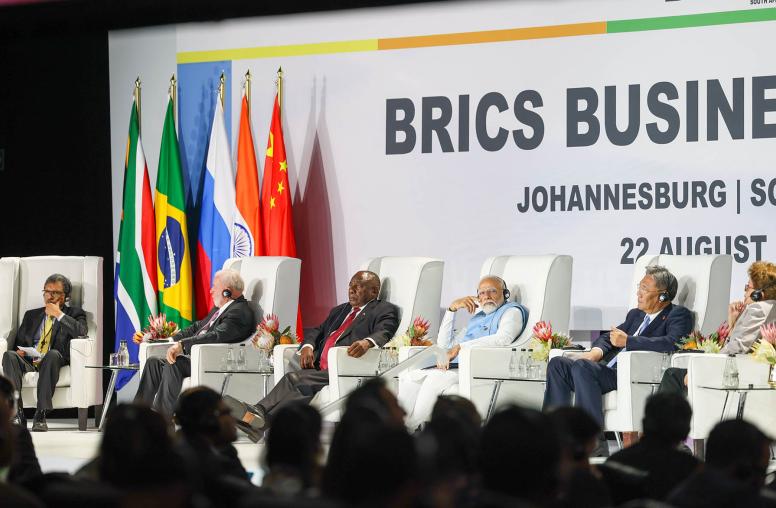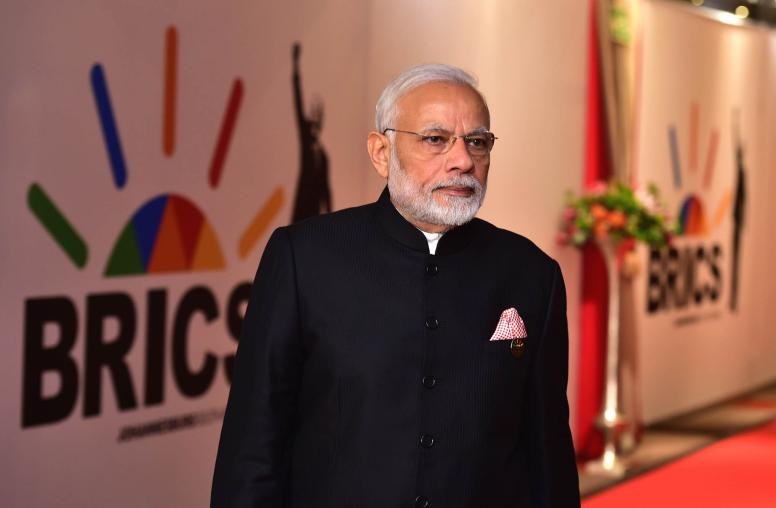Earth’s best defenders are Indigenous. They pay a price: violence.
Indigenous communities, often under attack, need help in preserving ‘biodiversity hotspots.’
Little noted by the world, warfare in India’s northeastern state of Manipur this spring has killed hundreds of Indigenous people and uprooted more than 35,000 residents. This violence along the India-Myanmar border fits a global pattern, also little noted: For decades, some 80 percent of human conflicts have smoldered in the “biodiversity hotspots” where our planet’s flora and fauna are most threatened by battles for resources and wealth — and where Indigenous peoples suffer the violence while protecting humanity’s common ecological heritage. We should strengthen the world’s inadequate public attention and policies on this crisis, and 2023 offers a chance to do so.

A Global Crisis: Warfare Targets Biodiversity
Public concern about climate change has pushed international policies to acknowledge the collision of biodiversity and conflicts over resources in a few regions — most notably the forested Amazon basin. Still, governments, publics and institutions fail to confront realities highlighted years ago by research: First, our planet and species are more dependent than we acknowledge on environmentally critical “biodiversity hotspots,” and second, these hotspots have become epicenters for warfare since at least the 1950s. Governments, institutions, peacebuilders and environmental protectors can take a key step at a November conference in Dubai to counter this lethal overlap of ecological, security and humanitarian crises.
Environmental science has underscored since at least the 1980s that our planet and human life rely on biodiverse ecosystems such as forests and wetlands that provide disproportionate “ecosystem services.” These services include purifying Earth’s air and water, processing biological waste, sequestering atmospheric carbon and hosting diverse plant and animal species that are vital for biological and medicinal science. Biodiverse ecosystems also produce food, energy and raw materials that are vital to nearby populations. Where human activity has destroyed 70 percent or more of these critical habitats, environmentalists classify them as “biodiversity hotspots.” The world’s 30-plus hotspots account for less than 3 percent of Earth’s surface yet are vital to the planet’s health.
Research published in 2009 noted that, from 1950 to 2000, 81 percent of major armed conflicts (those that caused more than 1,000 combat-related deaths) were fought within the 34 biodiversity hotspots recognized in 2009. Less than a third of these hotspots worldwide escaped major warfare. “This astounding conclusion — that the richest storehouses of life on Earth are also the regions of the most human conflict — tells us that these areas are essential for both biodiversity conservation and human well-being,” said a co-author of the study, Russell Mittermeier, then president of the nonprofit Conservation International.
Fourteen years later that “astounding conclusion” remains relevant, for biodiverse zones remain acutely threatened by armed conflicts — and increasingly by climate change. Among many conflicts afflicting biodiversity hotspots, the recent upheavals in and around Manipur are typical in receiving little international attention despite the deaths of thousands of people — more than 1,500 alone in extrajudicial killings by Indian forces, according to local human rights monitors.
Worldwide, Indigenous people form just 6 percent of humanity but protect a vastly larger portion of Earth’s biodiversity. Indigenous peoples, languages and cultures are repositories of often-overlooked human knowledge about our world’s most bio-diverse areas. “Their effective participation in biodiversity conservation programs as experts in protecting and managing biodiversity and natural resources would result in more comprehensive and cost-effective conservation and management of biodiversity worldwide,” a World Bank report observed fully 15 years ago. A study published last fall finds that forests have been kept more intact when they are both protected by laws and inhabited by Indigenous people than when either of those two protections was removed.
But in biodiversity hotspots worldwide, Indigenous people are often the first targets of economic and political interests willing to kill people who oppose projects to make money from their lands. This can include burning forests for farming or ranching, clear-cutting them for timber, mining, producing illegal drugs or building dams for hydropower. Manipur and northeast India are again examples. Indigenous peoples seek non-destructive economic development in accord with their cultures and religion, built around communion with nature. These include a religious observance, probably 1,000 years old, called Lai Haraoba (“The Pleasing of the Gods”) that focuses on Umang Lai (the “Deity of the Forest”).
Violence Afflicts Indigenous Groups
Even a tiny sample of other armed conflicts within Indigenous-populated biodiversity hotspots shows their breadth:
- Mali. The decade-old armed conflict in Mali is at the center of the overlapping crises in West Africa’s Sahel region that U.S., European and international institutions have addressed mainly as a counterinsurgency against Islamist extremist groups. But Mali’s current warfare began in 2012 as an uprising by indigenous Tuaregs seeking greater autonomy from the central government. The grievances of Indigenous groups of the Sahel’s fragile ecosystem — including Tuareg, Songhai, Fulani and Berabish Arabs — have been obscured and unaddressed by national and international policies. These groups have lived in environmentally sustainable ways for centuries, generating negligible waste and migrating as needed to avoid overburdening the land. That effort is now complicated by climate change. Bringing peace to Mali will require, among many steps, full political inclusion of Indigenous minorities and help for the country’s efforts to survive desertification and other climate change.
- Peru. About 12 percent (4 million) of Peru’s 34 million people are Indigenous in a country where 60 percent of the land is a biodiverse rainforest. Indigenous people suffered disproportionately during Peru’s armed conflict of the 1980s and ‘90s. They have been among targets of security forces who have killed demonstrators with no accountability — a problem that has continued with this year’s spike in protests. Indigenous communities’ challenges include massive deforestation from expanded agriculture, illegal mining and drug trafficking. That environmental destruction has yielded floods, landslides and impoverishment of rural communities. In response, Indigenous women have started initiatives that use traditional knowledge, including techniques of seed conservation and land tilling, to improve their communities’ abilities to grow sufficient food. A civil society group, the Center for Indigenous Cultures of Peru, is prominent in that effort, and in supporting thousands of Indigenous women in their campaigns for their people’s rights and environmental protection.
- Papua New Guinea. This island nation north of Australia is the world’s most multi-lingual, its 10 million people speaking more than 850 languages. The Indigenous populations of Papua New Guinea’s interior highlands suffer chronic communal conflicts that are fueled by weak governance; competition for resources; an economy where profits from mining bypass local communities living at subsistence levels; and despair of better futures, notably within a burgeoning youth population. In the Autonomous Region of Bougainville, indigenous communities have protested environmental damage from gold and copper mining, helping to fuel an independence movement. Amid the country’s densely forested mountains, coastal deltas and neighboring seas, local peoples use traditional practices to protect sensitive zones such as mangrove forests and to prevent overfishing that could endanger plant and animal species. The country is one of nine worldwide where the U.S. government is launching its new Strategy to Prevent Conflict and Promote Stability. A fuller inclusion of Indigenous peoples and their knowledge and practices will be vital to establishing peace.
A Vital Step Forward
The examples above reflect a global pattern that weakens international security, increases our world’s record levels of human displacement and hampers our struggle to reduce climate change. Global institutions, from news media to governments to international bodies, fail to more realistically respond to these existential threats because the most immediate victims, Indigenous communities, are marginalized in global power structures.
We urgently must bring Indigenous peoples to the center of our efforts to build peace and slow climate change — and 2023 offers a key opportunity. On November 30, delegates from the 198 signatories of the world’s main treaty on climate crises (the United Nations Framework Convention on Climate Change) will convene in Dubai. That conference, known as COP 28, has the chance to reduce this stunning imbalance: While Indigenous peoples are humanity’s frontline fighters against climate change (they collectively protect more than 24 percent of the world's carbon stored in tropical forests and biomass) they have access to less than 1 percent of global finance dedicated to addressing climate change. This year’s conference host, the United Arab Emirates, declares that it aims to “ensure a more equitable access to climate finance.” Civil society groups, governments and advocates for peace among peoples and with the planet have 25 weeks from now to marshal support for that change — and we should do so.



